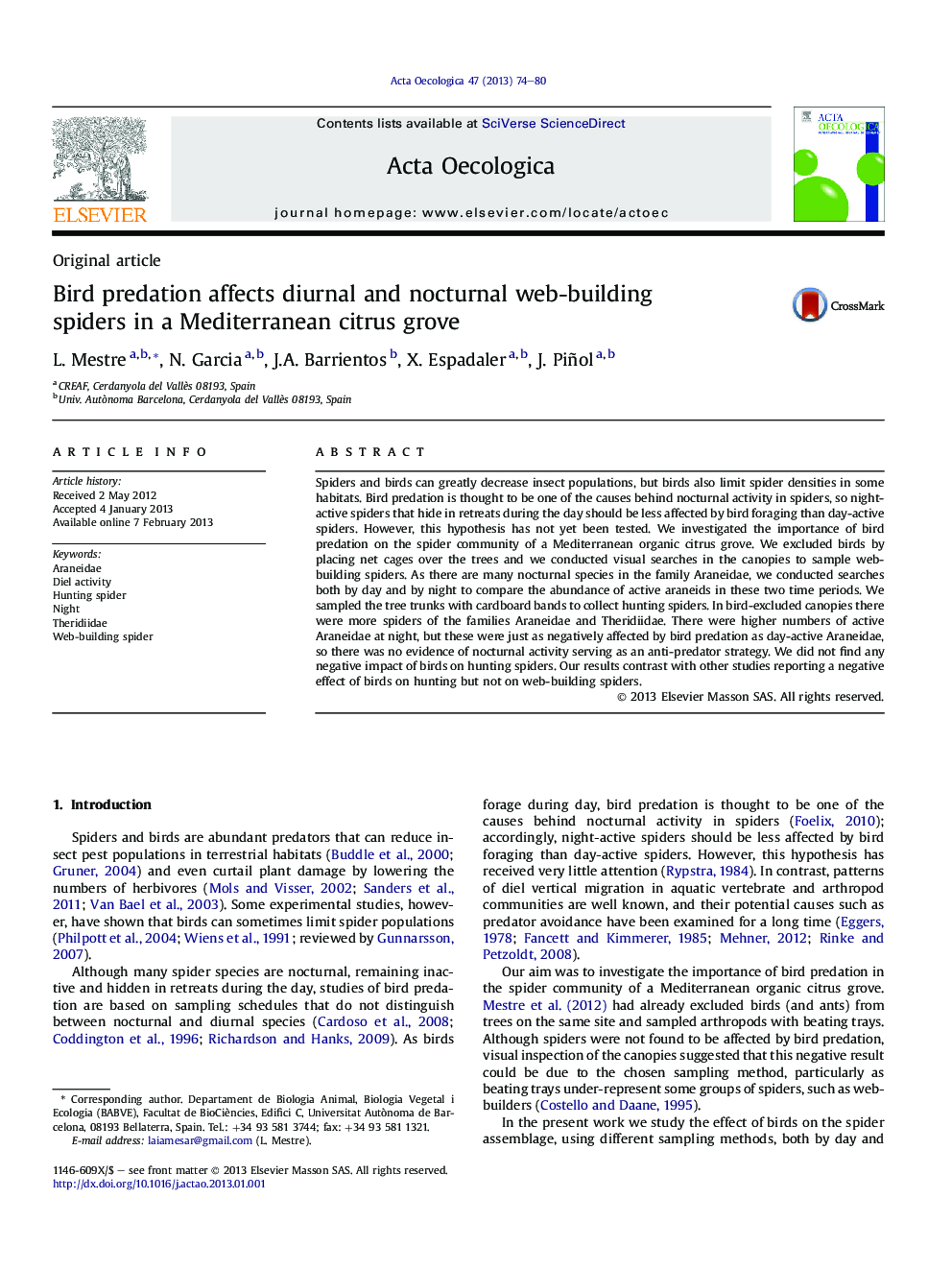| Article ID | Journal | Published Year | Pages | File Type |
|---|---|---|---|---|
| 4381109 | Acta Oecologica | 2013 | 7 Pages |
Spiders and birds can greatly decrease insect populations, but birds also limit spider densities in some habitats. Bird predation is thought to be one of the causes behind nocturnal activity in spiders, so night-active spiders that hide in retreats during the day should be less affected by bird foraging than day-active spiders. However, this hypothesis has not yet been tested. We investigated the importance of bird predation on the spider community of a Mediterranean organic citrus grove. We excluded birds by placing net cages over the trees and we conducted visual searches in the canopies to sample web-building spiders. As there are many nocturnal species in the family Araneidae, we conducted searches both by day and by night to compare the abundance of active araneids in these two time periods. We sampled the tree trunks with cardboard bands to collect hunting spiders. In bird-excluded canopies there were more spiders of the families Araneidae and Theridiidae. There were higher numbers of active Araneidae at night, but these were just as negatively affected by bird predation as day-active Araneidae, so there was no evidence of nocturnal activity serving as an anti-predator strategy. We did not find any negative impact of birds on hunting spiders. Our results contrast with other studies reporting a negative effect of birds on hunting but not on web-building spiders.
► We examined the effect of bird predation on the spider families of a citrus grove. ► We tested the differential effects of birds on nocturnal and diurnal Araneidae. ► Abundances of Araneidae and Theridiidae (web-weavers) were reduced by birds. ► The effect of birds was equally negative on both diurnal and nocturnal Araneidae.
